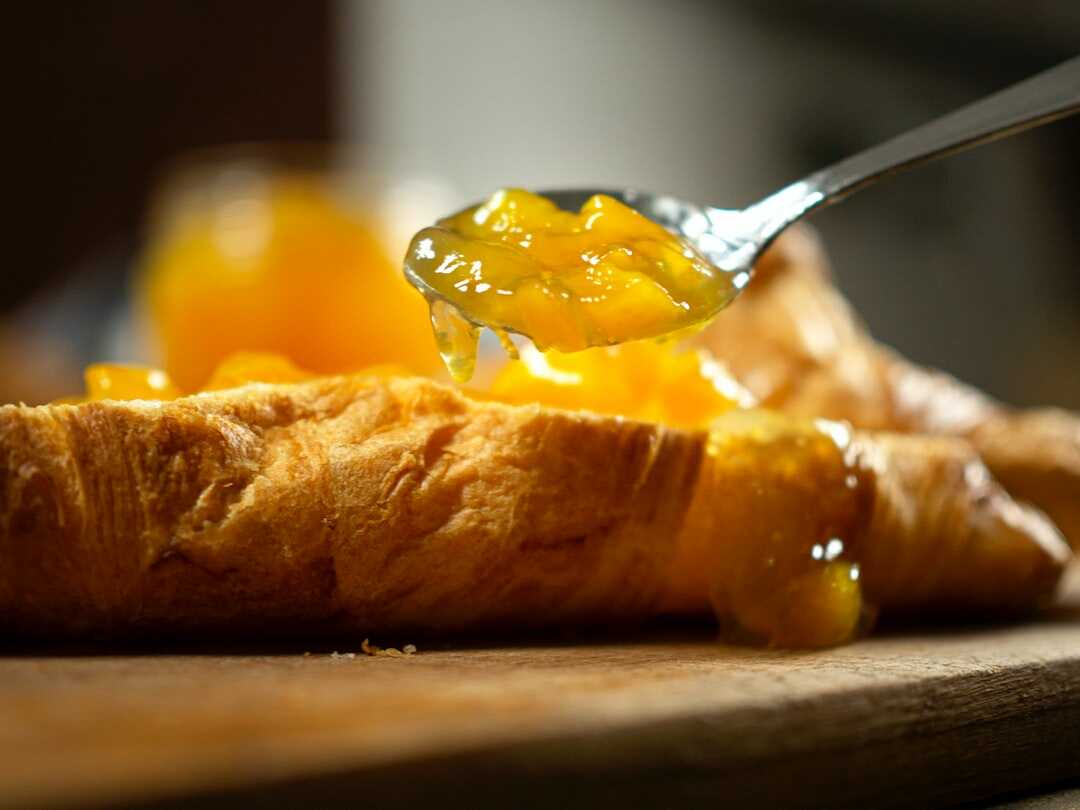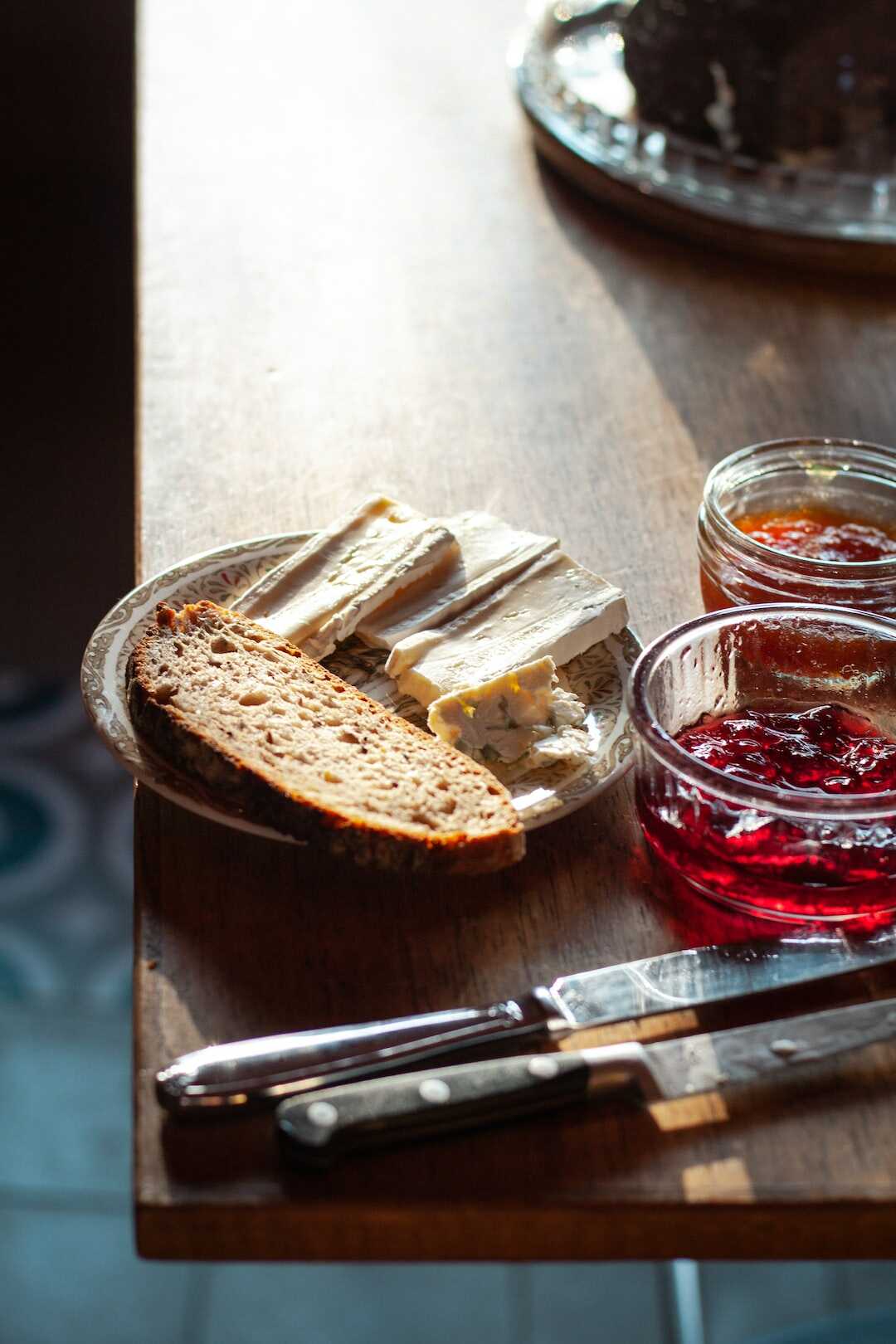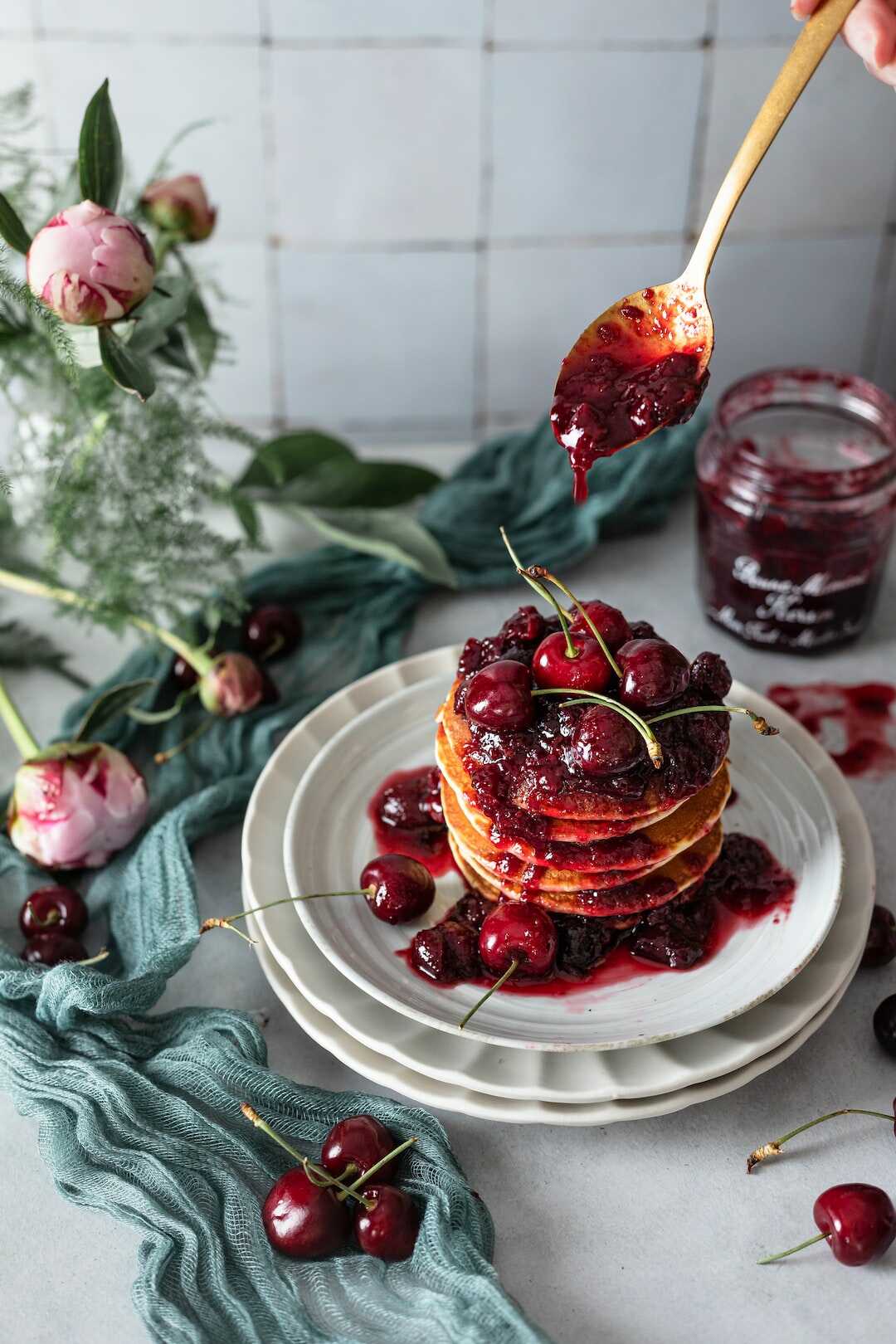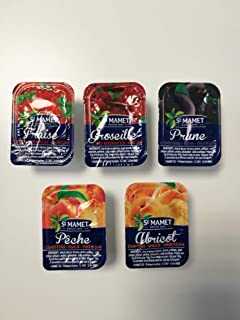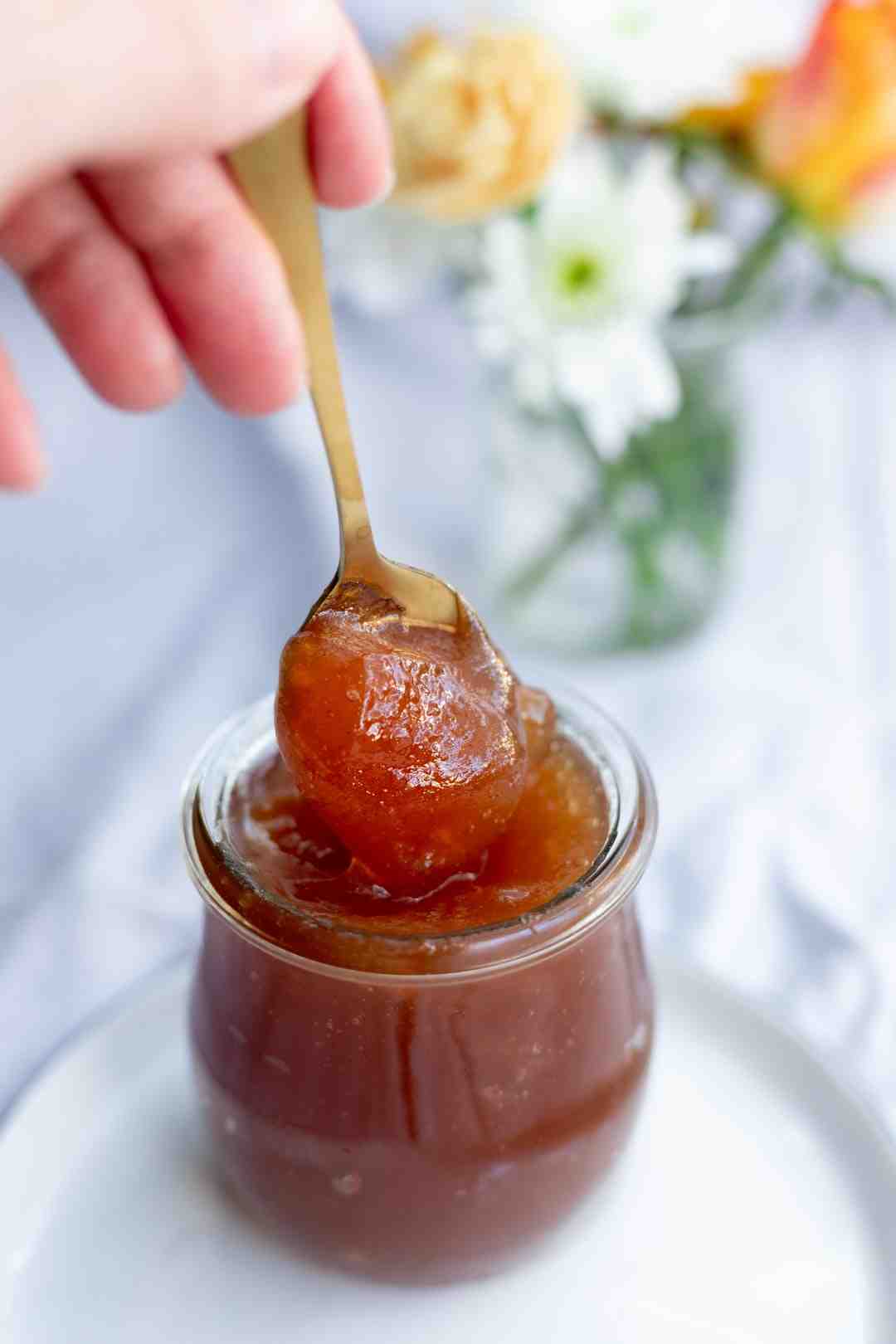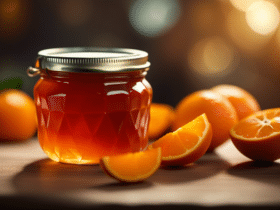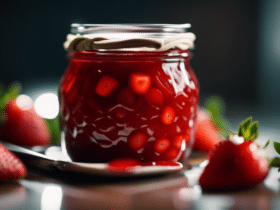How much Agar-agar for jams?

How much Agar-agar for a sheet of gelatin?
Agar-agar is a more powerful gelling agent than conventional gelatin. It is most often found in powder form, in 2g sachets. Then count 1 sachet for ½ L of liquid preparation. A 2g sachet of agar-agar represents approximately 3 sheets of gelatin.
How to calculate the amount of gelatin?
For gelatin sheets: count 7 g of water per gram of gelatin, ie 14 g for a “standard” gelatin sheet, which gives a mass of gelatin of 16 g for a gelatin sheet.
How to dose the agar?
All you have to do is bring a standard teaspoon. The most common dose of agar-agar, 2 grams, corresponds to a full teaspoon (see photo). Otherwise, the easiest way is to trust the manufacturers who often offer 2 or 4 gram pods.
Which gelling agent for jam?
Gelatin: gelling agent made from animal skin or bones. Very easy to work with, it will make the jam more compact. Before incorporating it into a preparation, it is rehydrated in cold water for about ten minutes. We use two sheets of gelatin for 1 kilo of fruit.
How to use Agar-agar for jelly?

How to make gelled water?
Hydration: gelled/thickened water recipe
- Dilute 2 to 4 g of agar-agar in a liter of lukewarm water.
- Boil for 3 minutes and add 250 ml of syrup (strawberry, mint, etc.) of your choice.
- Chill the mixture in ramekins by placing them in the ice compartment of the refrigerator for half an hour.
- Keep refrigerated.
How to gel a liquid?
Put half of the liquid to heat. Dissolve the powder in the rest of the liquid, then pour the mixture into the saucepan. Stop as soon as the mixture comes to a boil.
Why does Agar-agar not set?
The jelly didn’t set? Several possibilities. 1) The liquid has not been brought to a sufficient boil (10 to 30 seconds is recommended). 2) We used an acidic ingredient that slightly reduces the gelling power of agar-agar: black currant, lemon…
Why does panna cotta not take?
Resting in the refrigerator It takes between 6 to 8 hours, or a whole night, for the panna cotta to harden in the refrigerator. … If you want to unmold your panna cotta, you can also let it walk a little in the freezer for two or three hours so that it unfolds well.
Why does gelatin not set?
To prevent gelatin from losing its gelling ability, it is recommended not to dissolve it in boiling liquid. Some exotic fruits (kiwi, pineapple, papaya, mango) or watery fruits, such as pears, contain an enzyme when fresh which separates the proteins and splits the jelly.
How to incorporate the Agar-agar?

How to use Agar-agar as an appetite suppressant?
Recipe for the magic drink according to journalist and author Anne Dufour: pour 1 g of agar agar into a boiling cup (tea, coffee, infusion, broth, soup), mix well and consume before the water temperature drops at 40 ° C. drink 10-20 minutes before meals. Appetite suppressant effect guaranteed!
How to lose weight with Agar-agar?
– Add 1g of agar-agar to a cup of tea or coffee, broth or soup, or even lemon juice, boil for one minute and drink quickly, 15 minutes before the meal. It is advisable to drink hot, before the agar-agar freezes (from 40°).
When to put the Agar-agar?
Agar-agar: how to use it? Unlike gelatin, which just needs to be softened and then heated, powdered agar-agar must be incorporated cold into the preparation and then boiled for about 30 seconds. Freezing takes place upon cooling.
What is Agar-agar in the kitchen?
It is a vegetable binder and a perfect gelling agent to replace animal gelatin. There are a multitude of recipes in which agar-agar can be used: jams, fruit jellies, creams…
What is the difference between gelatin and Agar-agar?
A difference in kind Indeed, edible gelatin is of animal origin. Translucent, odorless, it comes from boiling animal skins or bones, mainly beef, pork or fish cartilage. For its part, Agar-agar comes from a Japanese red seaweed.
How to thicken too liquid jam with Agar-agar?

Why is the jam too runny?
1- When the jam reaches 4°C above the boiling point of water, it is concentrated to over 65% sugar and other dissolved solids. Below this concentration, the natural pectin simply cannot gel the jam and it will be too runny.
How to rectify jam that is too runny?
It is necessary to open the jars, pour the jam into a saucepan and cook again, in order to facilitate the evaporation of excess water. Stop cooking when the jam has the correct setting. To check, put a little jam on a very cold plate.
How do you know if the jam is done?
Proper cooking Using a thermometer is a professional tip (theoretical cooking temperature is 105°C). To check more simply that the jam is well cooked, do the drop test placed on a cold plate: it must set quickly, otherwise continue cooking.
Why put lemon juice in jam?
Lemon juice preserves the color of fruits by preventing their oxidation when cut. It highlights the flavor of the fruit. It accelerates jam setting by acting on pectin. A must for jam!
How much Vitpris?
of raisins 1 kilo of fruit equal to 900grs of jelly equal to 950grs of vitpris. you must filter your juice, & weigh it to obtain the quantity indicated in 3 (the fruit juice) & amp; place the vitpris in the bowl of jam & amp; the juice, beware of rapid cooking. good jam.

